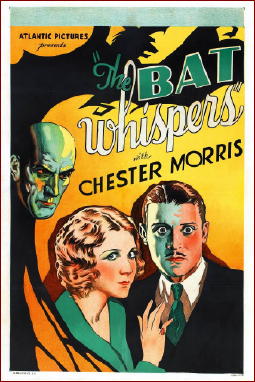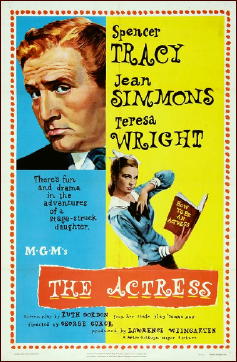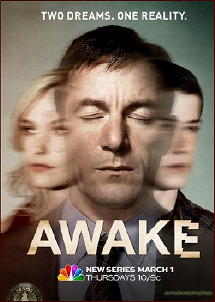February 2012
Monthly Archive
Wed 29 Feb 2012
Posted by Steve under
Reviews1 Comment
REVIEWED BY RAY O’LEARY:
SIMON BRETT – A Series of Murders. Scribner’s, US, hardcover, 1989; Warner, paperback, 1990. First published in the UK: Gollancz, hardcover, 1989.
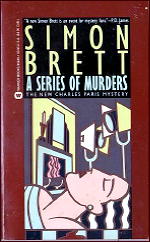
Chronically under-employed actor Charles Paris seems to have finally landed on his feet. He’s got the part of dim-witted Sgt. Clump in a six-part series based on the “Golden Age” Mystery Novels of W.T. Wintergreen, and if all goes well, he may suddenly become a celebrity.
Only All isn’t going Well: The Lead Actor can only play himself; Sippy Stokes, the girl playing his daughter, was hired because she slept with the Director; and Wintergreen keeps hanging around the set complaining about the changes they’re making in her books.
Then Charles discovers the body of Sippy Stokes in the prop room, buried under a shelf full of props. Everyone else seems satisfied it was an accident, but when he notices a detail in a scene filmed around the time of Sippy’s demise, Charles begins to nose around.
I wouldn’t rate this one as highly as several others in the series, chiefly because it isn’t hard to figure out the Murderer, but Series of Murders is still worth a look for the details about how a TV series is produced in England, as well as for the humor that always permeates a Charles Paris case.
Wed 29 Feb 2012
Posted by Steve under
Reviews[2] Comments
IT’S ABOUT CRIME, by Marvin Lachman
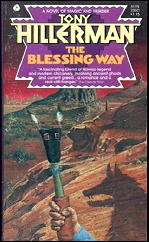
What more painless way is there to learn about another culture than to read Tony Hllierman’s Navajo series. I suggest you start with the first book in the Lieutenant Joe Leaphorn series, The Blessing Way (1970).
This was Hillerman’s first mystery, though it’s not clear whether when he wrote it he intended it to be the first of a series. It is largely a thriller, with Leaphorn off stage during much of the action, about a pair of anthropologists being stalked in the desert and mountains of the Navajo Reservation in Northeast Arizona and Northwest New Mexico. Its pluses are its authenticity about Navajo ways and an exciting climax.
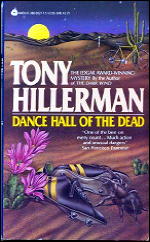
Before writing another Leaphorn book, Hillerman wrote a non-series mystery, The Fly on the Wall (1971), which is even better than the Navajo books I’ve read. Written a couple of years before Watergate, he made use of his own newspaper background to tell how an investigative reporter tries to solve a mystery involving murder and corruption in a Midwestern state capitol. It barely lost out to Forsyth’s Day of the Jackal for that year’s Edgar.
Dance Hall of the Dead (1973) deservedly did win an Edgar. While having Leaphorn solve three brutal murders, Hillerman gives us many insights into the Navajos and their neighboring tribe, the Zuñis, especially the rite of the Shalako dancers, the culmination of their ceremonial year.
Again, the ending is suspenseful, but along the way there is more real detection, with Leaphorn making deductions from physical clues like a Native-Born Sherlock Holmes.
— Reprinted from
The MYSTERY FANcier,
Vol. 11, No. 1, Winter 1989.
Tue 28 Feb 2012
Posted by Steve under
Reviews[3] Comments
GEORGE C. CHESBRO – The Language of Cannibals. Mysterious Press, hardcover, 1990; paperback, March 1991.
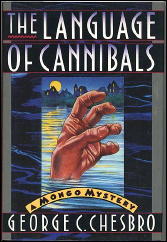
[At the time this review was written, it was in the context of mysteries and crime fiction based on the politics in the US in the 1960s.] For a while I thought this was a book that might have been among them. But Chesbro certainly doesn’t pull any punches in his work, and the reader gradually discovers that his political view of the world, as expressed in The Language of Cannibals, includes an overwhelming disgust with right-wing conservatives of all forms, no matter what era it occurred, going back to the end of World War II.
A friend of Mongo, criminology professor and a high-powered investigator Dr. Robert Frederickson, has died. He was an FBI agent whose demotion within the agency had forced him into a surveillance on a small community of pacifists a short way north of New York City. The death is apparently a boating accident, but the dead man had his own reasons for staying away from the water. Mongo suspects there may be more to the story.
Headquartered in Cairn NY is more than the Community of Conciliation. Newly arrived, and taking over the town, is the famed ultra-conservative demagogue, Elysius Culhane. What Mongo doesn’t know is that a “death squad,” designed to eliminate undesirable members of society, is also active in Cairn. And in counterbalance to the presence of equally famed pacifist folksinger Mary Tree is the KGB, or various members thereof.
I remember that Hugh Pentecost (or more likely his alter ego Judson Phillips) used to write crime fiction like this, mixed with the high voltage wires of political extremism, but I don’t think he ever had the bass, treble and volume knobs turned up as high as this, all at the same time.
Reading The Language of Cannibals might be an enjoyable ride, but only if you’re of the same mind as the author. In essence, though, it’s only a two-dimensional portrait that’s presented here. It’s the science fictional concept of parallel worlds that’s at work — or is it out-and-out fantasy? — combined with detective fiction, and while the detective story survives, I’m not sure that my sense of wonder does. My eyeballs are still tingling.
— Reprinted from Mystery*File 31,
May 1991 (with revisions).
Tue 28 Feb 2012
Posted by Steve under
Reviews[2] Comments
THE ARMCHAIR REVIEWER
Allen J. Hubin
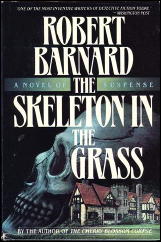
ROBERT BARNARD – The Skeleton in the Grass. Scribner’s, US, hardcover, 1988; Dell, paperback, 1989. First published in the UK by Collins Crime Club, hardcover, 1987.
Robert Barnard’s The Skeleton in the Grass has not the witty bite of some of his work. But it is a brilliantly observant picture of a pre-war [1936] English village, of the social classes and their distinctions and varying consciousnesses of war and peace. It is, in fact, a masterpiece.
Dennis Hallam, scholar, book reviewer, a man who cares, who feels deeply, sits atop the social structure with his family, though he rejects such class notions and his pacifist views are not welcome in all quarters. Especially now, as someone (prodded, presumably, by the fascist Major Coffey) is leaving little symbols of cowardice around the Hallam estate.
As tempers rise, could murder result? In so peace-loving a neighborhood? This is a novel not on any account to be missed.
— Reprinted from The MYSTERY FANcier,
Vol. 11, No. 1, Winter 1989.
Mon 27 Feb 2012
REVIEWED BY DAN STUMPF:
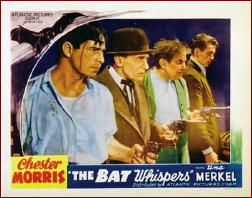
THE BAT WHISPERS. United Artists, 1930. Chester Morris, Chance Ward, Una Merkel, Richard Tucker, Wilson Benge, Maude Eburne. Based on the play by Avery Hopwood & Mary Roberts Rinehart. Director: Roland West.
This, if memory serves, is the film that inspired Bob Kane to create Batman, and I was much struck by the similarities between it and the Tim Burton film Batman with Michael Keaton: The Bat Whispers offers deliberately cartoonish sets, which the camera sweeps across like a hurtling winged thing; a nocturnal protagonist lurking about rooftops casting bat-like shadows; and a doppleganger relationship between a neurotic detective and a mad master criminal, who gets the last laugh in an eerie fadeout.
Fine stuff, this, done with style and obvious relish, and a pleasure to watch.
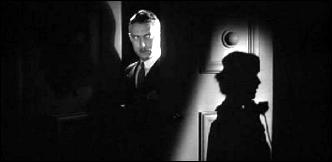
Unfortunately, Director Roland West (who was implicated in the death of his mistress Thelma Todd a few years later) occasionally has to pay attention to the Mary Roberts Rinehart play this was based on, at which times the action pretty much grinds to a halt while characters stand around and explicate.
Also to its detriment, The Bat Whispers features Three (count ’em) Three “comedy” relief characters, each funnier than the next and all of them put together about as amusing as Hepatitis. Definitely a flawed film, then, but also quite engaging at times, with the Batman parallels an added interest.
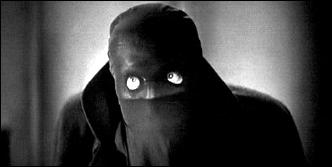
I should also make note of Chester Morris’s intriguing performance as the slightly-off-kilter Detective. No sane-on-the-surface madman, this, but a character whose carefully limned ticks get eerily unsettling very quickly. There’s a scene where he’s laying down the law to red herring Gustave Von Seyfertitz that drips with restrained menace.
Chester Morris never really hit the Big Time, despite a couple of chances, ended up his career in things like The She Beast (’57) and is little remembered today, but after this and Three Godfathers (’36) I’ll be seeking out his films a bit more carefully.
Mon 27 Feb 2012
Posted by Steve under
Reviews[4] Comments
PETER CAMPION – Diamonds Worth a Death or Two. Arco, UK, hardcover, 1955. No US edition.
Peter Campion has two titles included in the Revised Crime Fiction IV, by Allen J. Hubin. The other one is Model for Murder, also published by Arco, and also in 1955. Whether British private eye Phillip Mayhew is in both books, I do not know, but (of course) he’s definitely in Diamonds Worth a Death or Two (else I wouldn’t have brought him up).
His partner in the PI agency he’s in is Harry Green, but we don’t get to meet him, primarily because his body is found floating in the Thames on page nine. Mayhew and Green didn’t especially get along, but even though the police urge Mayhew (strongly) to keep his nose out of their business, there are certain standards that a private eye has to maintain. (We’ve heard that before.)
Green was last seen in a notorious night club talking to another gent whom Mayhew soon also finds dead, but he doesn’t get any real traction on the case until he ties it in with a diamond necklace mysteriously stolen on a train somewhere between Point A and London. The word “mysteriously†is used advisedly, as the necklace is not on the train and the passengers are searched.
This is one of those detective novels in which the leading character does not tell the story himself, nor does he have an assistant to bounce ideas off of. He does occasionally tell people that he has some ideas that are working out, but it’s left to the reader to follow the clues on his (or her) own as they occur.
I didn’t do a very good job, I’m sorry to report, and I apologize for letting all of you down. It all makes sense in the end, but I was rather confused most of the way through. I did like the “gather all of the suspects in one room†aspect at the end, and I had no idea the killer was who he (or she) was. Nicely done.
If Mayhew never made another appearance, he made the most out of this one. Whether or not he gets the wealthy young woman from whom the necklace was stolen, I leave to you to discover on your own. I won’t reveal all. Never have, never will.
Sun 26 Feb 2012
Posted by Steve under
Reviews[6] Comments
THE BACKWARD REVIEWER
William F. Deeck
H. W. RODEN – One Angel Less. William Morrow & Co., hardcover, 1945. Detective Book Club, hardcover reprint, 3-in-1 edition, June 1945. Dell 247, mapback edition, 1948.
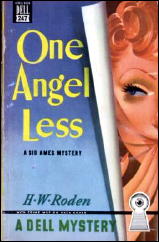
Sid Ames, private Investigator, is hired to check up on a woman who is in a private hospital. Her husband is not allowed to visit her and wants to know what is going on.
For the best of motives — he needs the money — Sid agrees to investigate even though he loathes small towns, in one of which this hospital is located. And he has good reason to dislike this small town since its officials turn out to be corrupt.
One Angel Less is the standard tough-guy novel, with the females getting in each other’s way while they try to get at Sid. He is beaten up and yet awakes the next morning in surprisingly good condition. He undergoes another beating along with dehydration during an interrogation at the police station but escapes shortly thereafter by leaping out a window and running pell mell. Oddly, a display of coffins outside his hotel gives him the willies.
For those who don’t mind novels the last chapter of which the villain has the drop on our hero and reveals all, omitting no detail however slight, and then is shot dead by our hero, who can barely use the hand holding the gun, surprising no one but the bad guy. Talky villains always come to no good end.
Even Ike and Mike, Sid’s assistants, a delightful pair particularly in their guise of undertakers, can’t keep this one from being adjudged “Read if there’s nothing else available.”
— From The MYSTERY FANcier, Vol. 11, No. 1, Winter 1989.
Editorial Comment: Bill’s review of You Only Hang Once, another mystery by H. W. Roden, was posted earlier on this blog. Check it out here. (He didn’t much care for that one, either.) Private eye Sid Ames appeared in a total of four novels. A complete list follows the previous review.
Sun 26 Feb 2012
REVIEWED BY WALTER ALBERT:
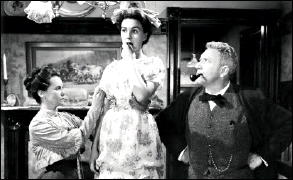
THE ACTRESS. MGM, 1953. Jean Simmons, Spencer Tracy, Teresa Wright, Anthony Perkins, Mary Wickes, Ian Wolfe. Screenplay by Ruth Gordon, based on her play Years Ago; cinematographer: Harold Rossen. Director: George Cukor. Shown at Cinecon 39, Hollywood CA, Aug-Sept 2003.
I had never seen this movie, based on a play by Gordon, which was in turn based on her own experiences. Jean Simmons was, predictably, a beautiful and luminous incarnation of Ruth Gordon (or of her idealized self; I don’t recall seeing pictures of the young Gordon, but it’s hard to imagine Simmons, who’s still gorgeous, aging into the on-screen persona I am familiar with).
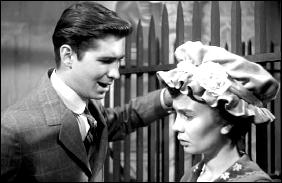
There was only eleven years difference in age between Simmons (b. 1929) and Teresa Wright (b. 1918), but Simmons caught all the fragile turbulence of late adolescence, and Wright had the dramatic weight to carry her role as Ruth Gordon’s mother.
Spencer Tracy was superb as the father whose ambitions for his daughter were so clearly at odds with her ambitions, and Anthony Perkins, in a role as Simmons’ suitor that he seemed to inhabit effortlessly, made his film debut. A distinguished set of performances, with direction and cinematography to match.
Simmons captivated the audience in her interview, displaying an intelligence and beauty that characterized her on-screen persona. One of the memorable Cinecon appearances of recent years.
Editorial Note: As has been pointed out in the comments, Walter’s review was written in 2003, and Jean Simmons, alas, is no longer with us. She died in 2010.
Sun 26 Feb 2012
Posted by Steve under
Reviews[3] Comments
CARTER BROWN – The Stripper. Signet S1981, paperback original, 1st printing, August 1961.
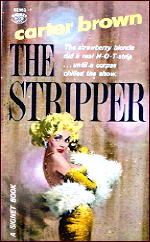
She’s billed as Deadpan Delores, the girl who says it all from the neck down. Yes, indeed, she could easily provoke an interesting evening of intimate conversation. Lieutenant Al Wheeler unfortunately has a one-track mind and wants only to read between the lines.
What it’s about, if it matters, is a suspicious suicide, a lonely-hearts club and a strip joint. It’d be unworthy of anyone to compare Wheeler’s activities to anything resembling actual police procedure, but if you like your detective fiction filled with incessant wisecracks and incredibly sexy dames, The Stripper might serve to soothe that ache in the mushy part of your mind. (Rating: C)
— Reprinted from The MYSTERY FANcier, Vol. 1, No. 5, September 1977 (very slightly revised).
NOTE: Geoff Bradley has reviewed both the book and the musical comedy based on it on this blog. (Follow the links.)
Sat 25 Feb 2012
A TV Review by Michael Shonk
AWAKE. NBC. 20th Century Fox Television. “Pilot.†01 March 2012, Thursday at 10pm (Eastern). Cast: Jason Isaacs as Detective Michael Britten, Laura Allen as Hannah, Dylan Minnette as Rex, Steve Harris as Det. Freeman, Wilmer Valderrama as Det. Vega, Cherry Jones as Dr. Evans, B.D. Wong as Dr. John Lee, Michaela McManus as Tara. Written and created by Kyle Killen. Directed By David Slade. Free sneak preview available at NBC.com, Hulu.com, iTunes, Amazon Instant Video, and other streaming and downloading services.
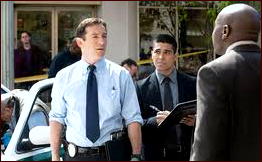
Detective Michael Britten (Jason Isaacs, Case Histories) was driving one night, his wife and son with him in the car. For reasons unknown the car goes off a cliff and crashes. Now Michael has two lives, one where his wife is alive and his son is dead, and the other where his son is alive and his wife is dead.
We see him with his wife Hannah (Laura Allen, Terriers) who is trying hard to accept and move on from the death of their son. At work, his partner Det. Freeman (Steve Harris, The Practice) is reassigned and Det. Vega (Wilmer Valderrama, That 70’s Show) is made his new partner. His superiors force Michael to see therapist Dr Lee (B.D. Wong, Law & Order: SVU). His new case has him trying to catch a serial killer who poses for security cameras. Back home he falls asleep next to his wife.
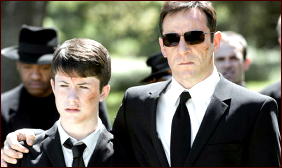
He wakes alone. He walks down the hallway of his home and greets his very alive son. In this life, his wife is dead. Freeman continues to work with him and Vega remains a patrolman. His superiors force him to see therapist Dr. Evans (Cherry Jones, 24). The case here is a kidnapped child.
The characters in the two worlds seem to be opposites: the wife versus the son, the inexperienced new partner versus the experienced partner, the gruff male shrink versus the sweet female shrink.
Unexplainably, the crimes connect as Michael finds clues in one life that leads to the solution of the crime in his other life.
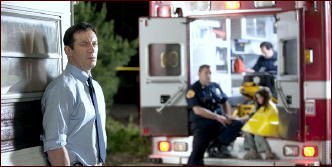
Each therapist tries to convince him that his or her world is the real one and that he needs to accept the death of the loved one in his “dream†world.
Those who enjoy procedural TV drama should enjoy the double dose every week. Those who enjoy series with deeper mysteries running through the background will find much to speculate about.
Why did he crash? Why did they find alcohol in his bloodstream after the crash when he hadn’t had a drink that night? Which life is real? Does either world exist beyond Michael?
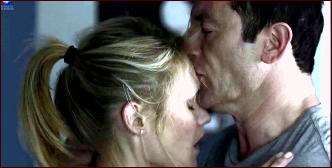
Why did both of his partners have life changing events happen to them, yet see those events as they related to Michael? When Michael woke and could not find his wife or son, why did he freak out?
Can Michael survive living two lives? Given a chance to live life with his wife and his son, Michael sees no reason to accept the death of either. Except his wife and son can’t move on and start a new life without Michael losing one of them.
Time will tell how long show creator Kyle Killen (Lone Star) and the writers can keep this premise interesting, but this episode is worth watching.
Next Page »








